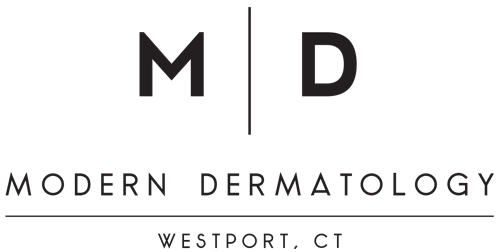ACNE
Acne is very common among teens (roughly 85% experience the condition) as well as among adults (55%), especially among female adults. It is one of the top skin concerns we hear about from our patients.
Hormones play a prominent role in acne, which is why it often peaks during life stages like puberty and pregnancy. Elevated hormone levels stimulate sebaceous glands to produce more oil (sebum). Sebum combines with dead skin cells to form a comedone (a plug in the skin). These comedones may rupture, and when they do the sebum seeps into the surrounding skin causing inflammation. The inflammation causes the bump or pustule you see on your skin’s surface, or in some cases a deeper cyst below the skin.
The good news is there are many treatment options available, and a regimen can be customized for your skin’s needs.
Topical medications can be effective but can also cause excessive drying if not used correctly. Some options include:
Benzoyl Peroxide - available in prescription strength as well as in lower strength over the counter. This antimicrobial therapy can help all forms of acne. Use with care as it can bleach bedding and clothing.
Salicylic Acid – helps correct the abnormal shedding of skin cells and unclogs pores to resolve and prevent non-inflammatory lesions. It does not impact oil production or bacteria. You can find many over the counter acne products with salicylic acid including lotions, creams and pads.
Retinoids – also known as Vitamin A, retinoids increase skin cell turnover, which can reduce plugged sebaceous glands. Retinoids are the cornerstone of acne treatment and can help all forms of acne as well as improve acne scars by promoting collagen remodeling. Retinoids can make skin more sensitive to the sun, and can cause dryness, irritation and redness if used excessively. A small pea-sized amount for the entire face is sufficient.
Topical antibiotics – these come in solution, gel or cream form. They work against bacteria that lives on the surface of the skin, preventing inflammation and the formation of new pimples.
Azelaic acid – is used to treat mild to moderate acne, both comedonal acne and inflammatory acne. It works by killing acne bacteria that infect skin pores. It also decreases the production of keratin, which is a natural substance that promotes the growth of acne bacteria.
Topical dapsone – this anti-inflammatory treatment is helpful for mild to moderate acne and generally very well tolerated.
Systemic medications
Antibiotics are sometimes used for cases of moderate to severe acne. They work to reduce bacteria thereby reducing inflammation. Typically, they are used for several consecutive months (on average three, but maximum six if possible),. The most commonly used antibiotics are doxycycline, minocycline, cefadroxil, and ampicillin. There are specific instructions that accompany usage of these medications based on each patient’s needs. Some of these medications can cause increased sensitivity to the sun, so it is recommended that you wear a daily sunscreen and avoid direct exposure.
Oral contraceptives and hormonal medications – medications like Spironolactone have been effective solutions to clear acne in women by decreasing male hormones called androgens, which in turn decreases oil production.
Isotretinoin (Accutane) - this medication is used for cystic acne that has not responded to other medications or for severe acne with scarring. It is used for 4-6 months and works by decreasing inflammation as well as the formation of comedones. There are some potentially serious side effects, so patients undergoing treatment will be monitored with monthly appointments and lab work. We have many years of safety date for isotretinoin and when administered by a board certified dermatologist, it is a very safe life changing treatment as it is the only medication that truly changes the course of acne and has long lasting results.
Dietary modifications (low glycemic, carbohydrate, dairy diets) and supplementation with probiotics or other vitamins may also be helpful in some cases.
There are additional in-office procedures and therapies that can help with Acne. These include chemical peels (glycolic acid), intralesional steroid injections, light therapies (blue and red light), Photodynamic Therapy (PDT), peels, extractions, and specialized facials.

